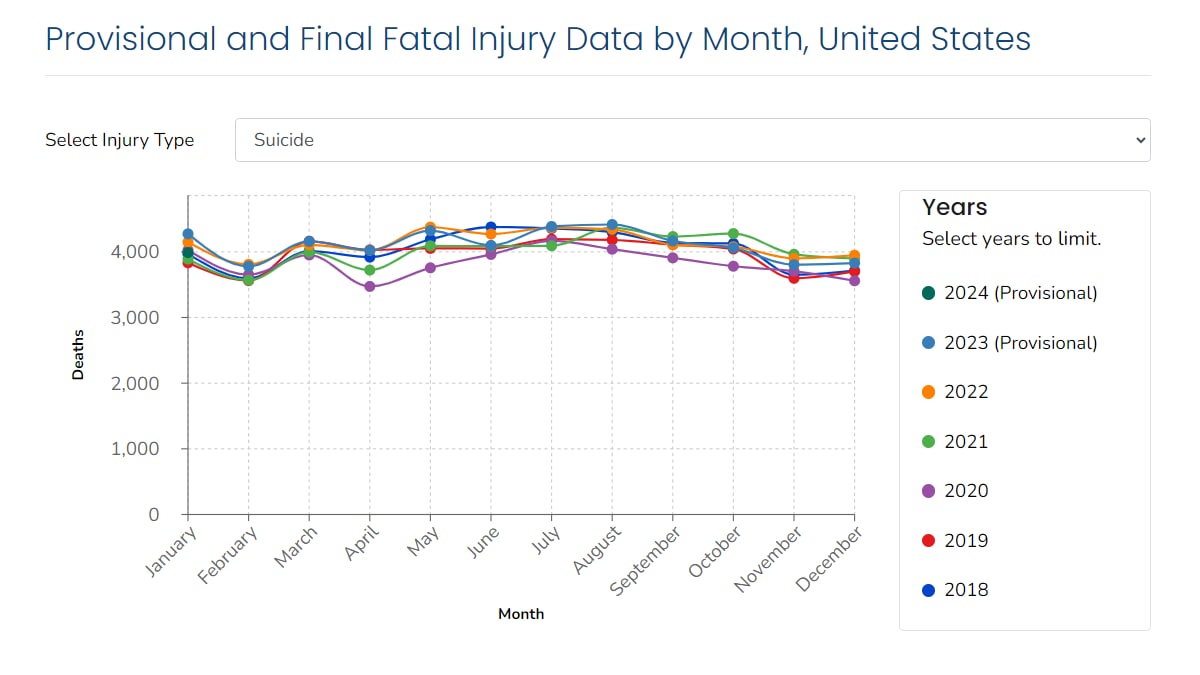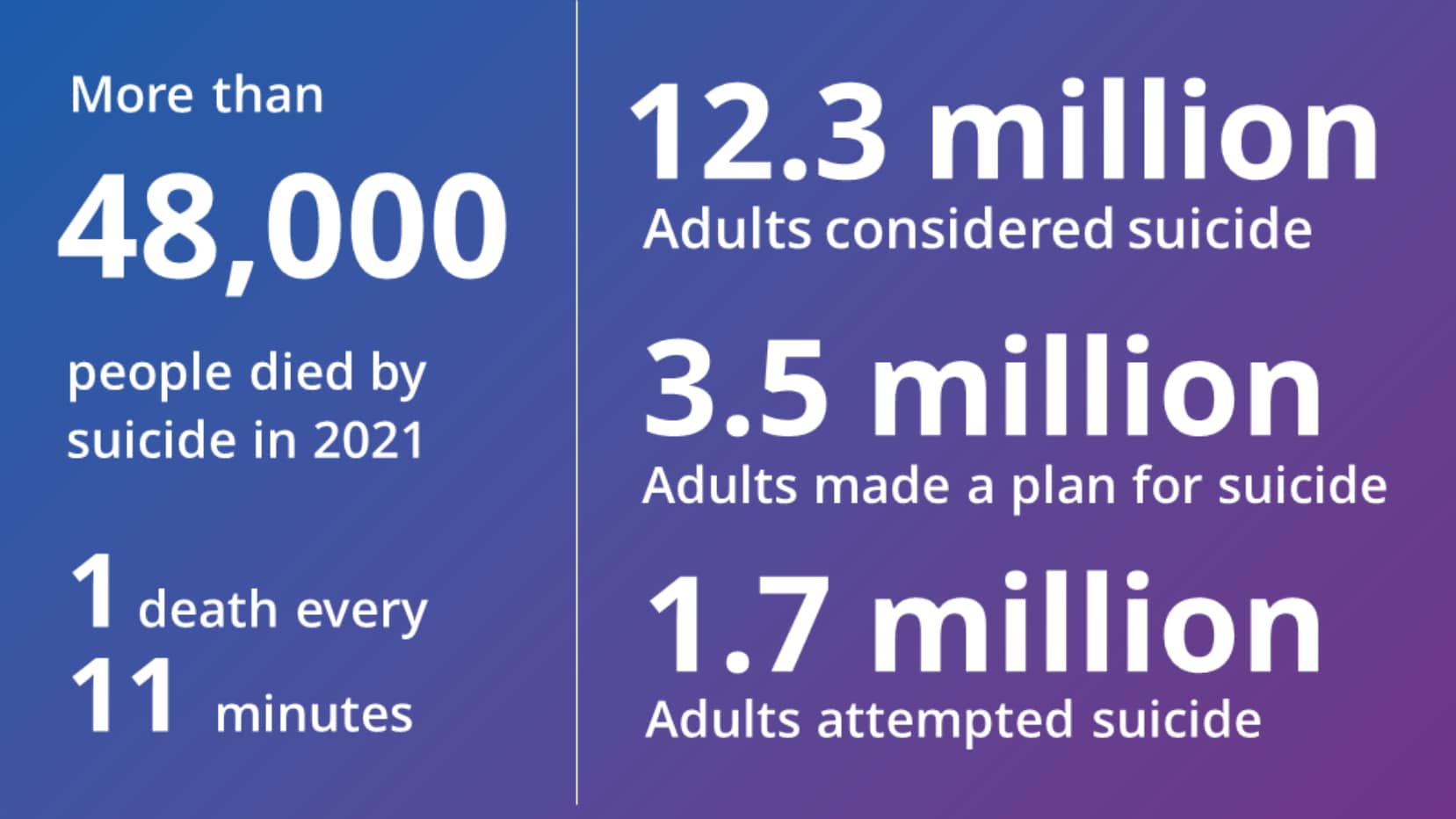At a glance

Suicide trends interactive chart
Suicide is one of the leading causes of death in the United States. Use our interactive chart to track the number of suicide deaths by month and year.

Suicide deaths, plans, and attempts in the United States

- Data for race and Hispanic or Latino (Hispanic) origin should be interpreted with caution; studies comparing race and Hispanic origin on death certificates and on U.S. Census Bureau surveys have shown inconsistent reporting. This might lead to underestimates for certain racial groups.
- Provisional data shown above are based on death certificate data received, but not yet fully reviewed, by CDC's National Center for Health Statistics (NCHS). Provisional data provide an early estimate of deaths before the release of final data. Complete documentation may be found at https://wonder.cdc.gov/mcd-icd10-provisional.html.
- Data were accessed on CDC WONDER on June 17, 2024 and represent data received as of June 11, 2024.
Source: SAMHSA, CDC NCHS National Vital Statistics System, Provisional Mortality on CDC WONDER
Suicide rates
Suicide rates increased 37% between 2000-2018 and decreased 5% between 2018-2020. However, rates returned to their peak in 2022.
Source: CDC WONDER
Learn more about suicide rates by state.
Suicide rate disparities
Some groups have disproportionately high rates of suicide.
The racial/ethnic groups with the highest rates in 2022 were non-Hispanic American Indian and Alaska Native people and non-Hispanic White people.
The suicide rate among males in 2022 was approximately four times higher than the rate among females. Males make up 50% of the population but nearly 80% of suicides.
People ages 85 and older had the highest rates of suicide in 2022.
Source: CDC WONDER
Learn more about disparities in suicide.
Suicide methods
Firearms are the most common method used in suicides. Firearms were used in more than 50% of suicides in 2022.
Source: CDC WONDER
Learn more about firearm violence.
